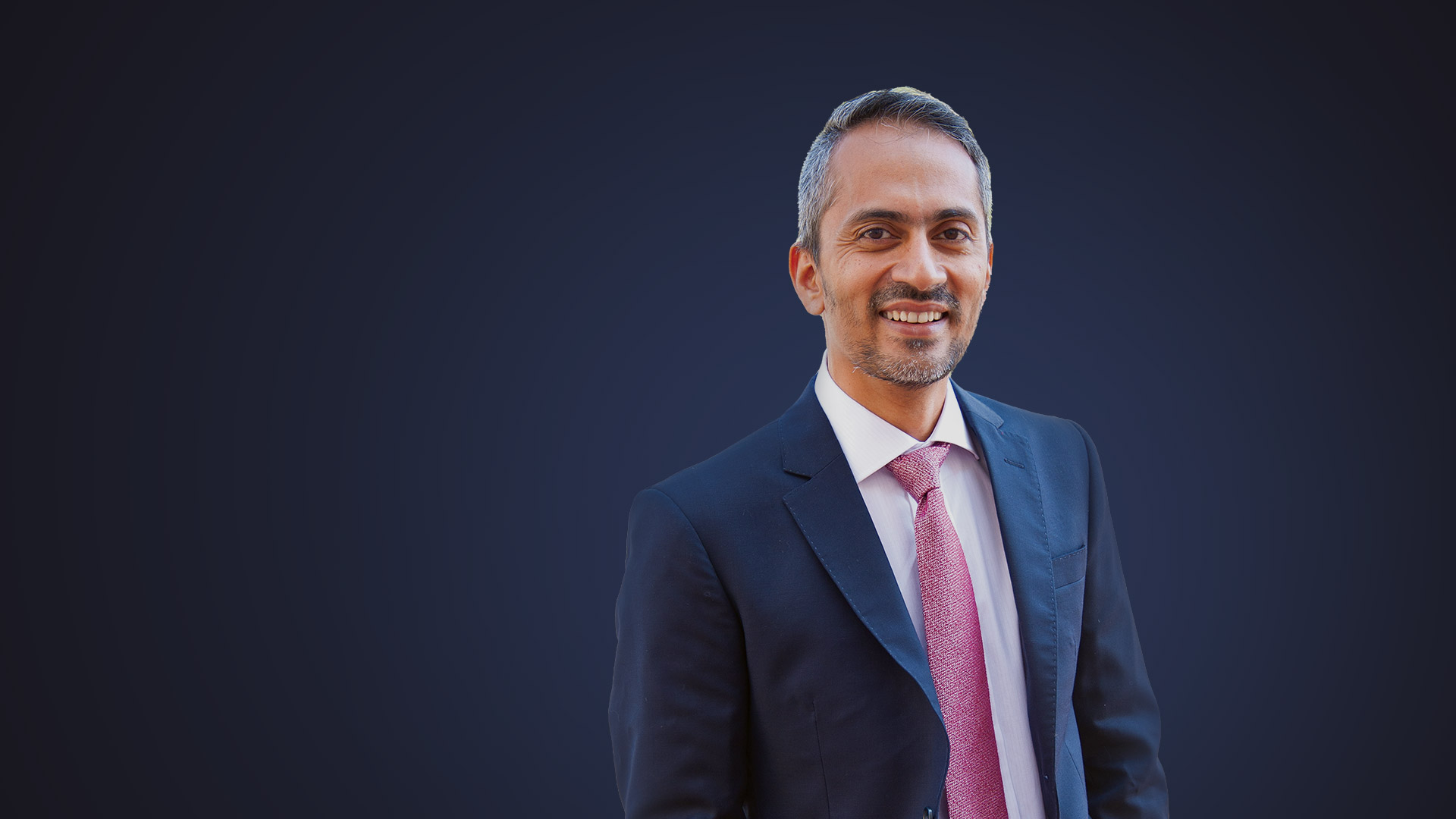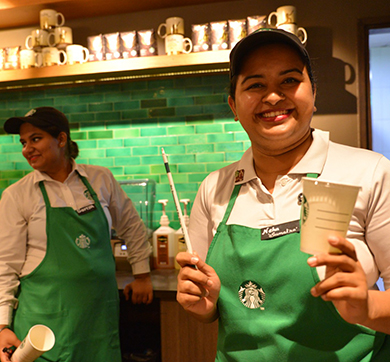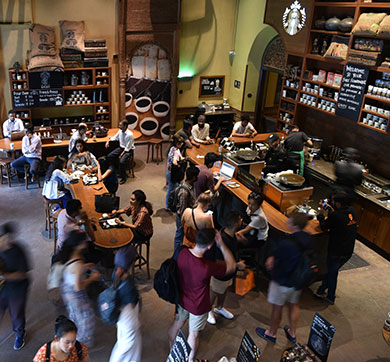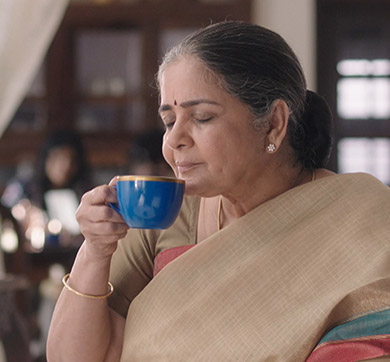November 2021 | 1219 words | 5-minute read
As Sushant Dash assumes his new position, the role feels curiously familiar. Having been part of the core team that opened the first Tata Starbucks store in India in 2012, he was directly responsible for the brand’s strategy and marketing in the country during the launch.
In this interview, Mr Dash talks about how he is gearing up to meet the challenge of expanding the business in one of the fastest growing markets for Starbucks.
You assumed your new position as CEO in the middle of the pandemic. What was the experience like?
Taking up a new assignment during the pandemic was challenging, but it came with a lot of learning. Since assuming office four months ago, all my meetings were virtual. It’s only after I was fully vaccinated that I started visiting the stores.
The new assignment makes me nostalgic, as I was part of the team that first launched the brand in India. In a lot of ways, it is quite humbling and a privilege to be able to see how the company and brand have grown. I’m looking forward to taking this company and brand legacy forward.
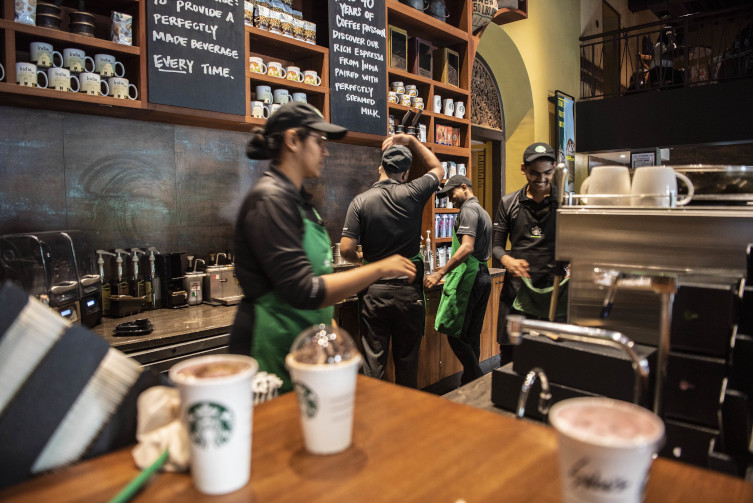
How well entrenched is the brand now in India?
Starbucks has done phenomenally well in India. The size and scale of business is impressive, as India continues to be one of the fastest growing markets for Starbucks globally.
In 2020, we opened 39 stores and entered 7 new cities. This was the highest number of stores we have opened in a year; it shows our commitment and belief in the market potential. The success is entirely due to the team and partners at the stores. Today we serve more than 300,000 consumers a week, out of 221 stores across 18 cities.
How different is the US model from the one here?
From an operational perspective, the store’s day-to-day running is close to the Starbucks model. What the brand stands for, at its core, is not just coffee but also the ambience, the warmth and the connect that partners establish with our customers. The experience is at the heart of what Starbucks stands for. We call it the ‘third place’ between the customer’s work-life and their home.
While we stay true to the essential Starbucks experience, certain things are intrinsically Indian. In the US, Starbucks is a part of everyday life; customers pick up their coffee as a takeaway. In India, people come to our stores to spend time with their friends and family. For Indians, tea or coffee at home is always accompanied with a snack. We are one of the markets with the highest contribution of food to the overall numbers.
Starbucks in India has Indianised itself to a great extent. How do you maintain a balance between adopting the culture of the country in which it is located and staying true to the core culture?
The design of our stores, in terms of the look and feel, is quintessentially Starbucks, but Indian motifs, art and artefacts are incorporated to celebrate Indian cultural elements while remaining true to what the brand stands for globally.
The mingling of cultures is also apparent in our cuisine and beverage menu. Our menu comprises the typical international bestsellers like the blueberry muffin and java chip cookie, staples in Starbucks stores everywhere. To satiate the Indian palate, we have introduced innovations like chatpata paratha wrap, murg kathi wrap and Kakori kebab wrap.
In summer, we introduced the mango frappucino, a seasonal favourite among our customers. We also launched a special festival blend for Diwali to honour the Indian coffee-growing community. The coffee beans were selected from the coffee plantations of Tata Coffee at Jumboor and Suntikoppa in Karnataka and Valparai in Tamil Nadu.
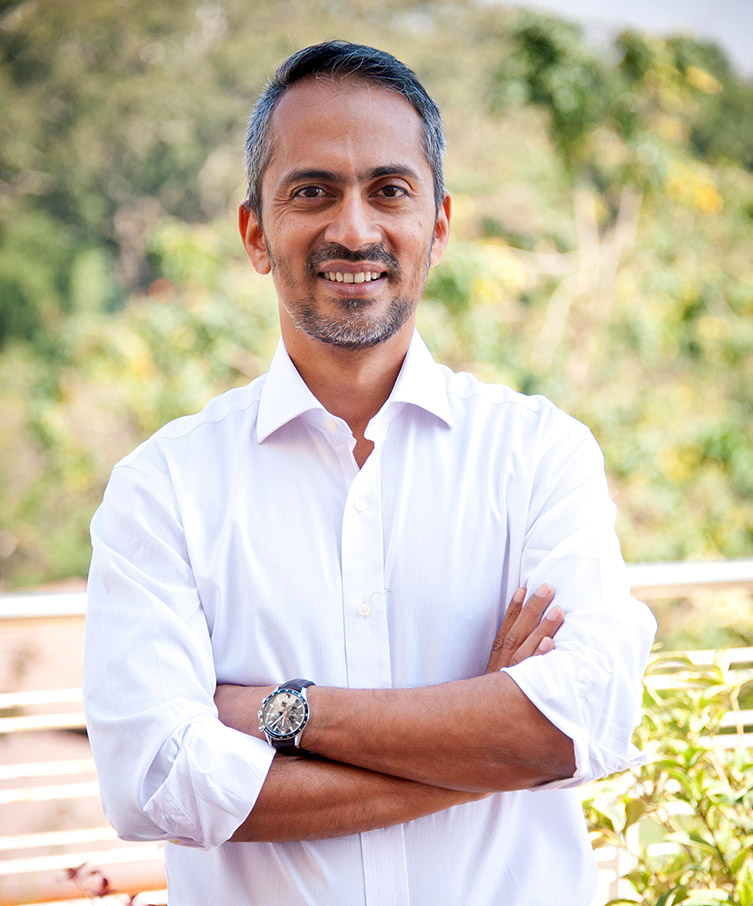
You are now present in over 200 stores. What are the elements you look for before entering a new city?
We study, analyse and understand the demographics and customer profile that would embrace the Starbucks experience. The next step is to look for real estate that would complement a brand like ours. We also assess the backend facilities required to match expectations that the customers have about the perfect Starbucks experience.
During the pandemic, we entered 7 new cities. The demand for Starbucks is coming from places beyond the metros. We are quite bullish about the brand’s potential.
How did you help your people to get through the pandemic?
The pandemic hit our industry quite badly, with the second wave hitting us harder. Many of our partners and their families were affected by Covid. Now that things have opened up, I see the same zeal and commitment. The good news is that business is showing a positive trend.
Our coffee-tasting ritual, an integral part of Monday mornings across stores, has gone virtual. We use this time to speak with our partners. They share stories about themselves and their families. We also increased the medical cover, offered medical facilities and made vaccines available to them.
How did you take the business digital?
In the lockdown, if our customers couldn’t come to the store, we could take the experience and warmth of Starbucks to them. We worked on improving our deliveries in a manner befitting Starbucks by recreating the experience digitally. For instance, we worked with packing experts to figure out how our offerings could reach the consumer without spillage and at the right temperature. We worked with aggregators and delivery platforms to see deliveries were handled faster and efficiently by those working on our account.
Innovations like online payments, orders placed through the Starbucks app or on WhatsApp using the QR code and picked up at the kerbside without stepping into the store helped us carry on in the face of adversity.
Your biggest strength is your diversity. What steps do you take to enhance and demonstrate diversity?
Both our parent companies — Tata Consumer Products and Starbucks Corporation — have taken steps ahead of their times to demonstrate diversity. As a first step, we decided to offer healthcare to part-time workers, giving everyone an equal opportunity. We also offer 100 percent pay equity.
Tata Starbucks has announced that by 2022, 40 percent of our workforce would consist of women. Today, that percentage stands around 31-32 percent. We have launched seven all-women stores in Delhi and Mumbai.
We have introduced the ‘Brew of Balance’ that provides opportunities to women returning to the workforce after a career break.
How has Tata Starbucks aided in the evolution of India’s café culture?
Today, we cater to 300,000 customers a week; more than 900,000 loyalty members attest to their satisfaction with the brand. People come in for the coffee, but stay in for the warmth and experience. Starbucks has ingrained itself in people’s hearts — the regular ‘third place’. In fact, our partners know the regular clientele by their first names.
You’re heading very close to the completion of your first decade in India. Looking back, what would you describe as Tata Starbucks’ greatest achievements?
I am proud of our coffee leadership in India. It’s a testament to the fact that we source the best coffee for our consumers. I’m also proud of building a deep sense of connection with a large customer base, which is no mean feat.
—Cynthia Rodrigues




